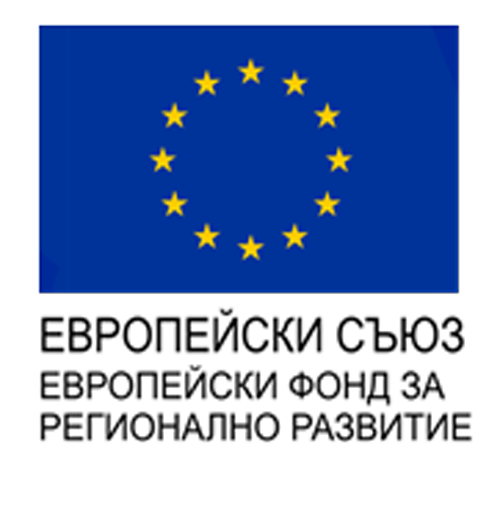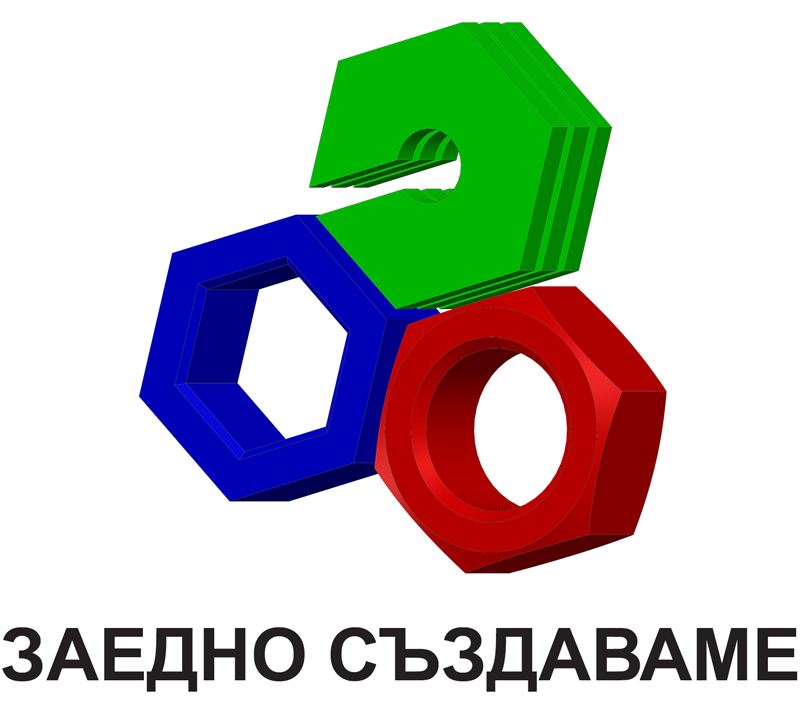PROJECT BG05M2OP001-1.001-0008 | NATIONAL CENTER OF MECHATRONICS AND CLEAN TECHNOLOGIES
LABORATORIES
Chromatography is а method widely used for qualitative and quantitative analysis of organic compounds. Gas chromatography (GC) with TCD and/or FID is mainly used for analysis of volatile organic compounds and gas mixtures, while high performance liquid chromatography (HPLC) with a photodiode array detector is applied for characterization of compounds containing chromophore groups.
The laboratory studies the behaviors of materials with temperature changes. By measuring the temperatures and heat fluxes correlated with thermal transitions in the materials under study, the changes that correspond to a change in their structure, composition and phase state are determined. Thermal analysis which allows the study of weight and phase changes in the composition of the metal/metaloxide nanoparticles in bulk or supported on porous materials during the thermal treatment in different gas media (inert, oxidative, reductive) is performed.
The laboratory has an apparatus for determining the textural characteristics of zeolites, micro/mesoporous silicates, mesoporous metal oxides and others. Porous materials are used as catalysts or as carriers of catalytically active phase for elimination of volatile organic compounds from domestic and industrial sources of pollution in processes on the basis of which clean technologies are developed, for processing of petrol fractions and valorization of biomass for the production of biofuels, biopolymers and valuable chemical compounds.
The laboratory performs theoretical research in the field of:
- Molecular design of new organic materials ;
- Modelling of mechanisms and stereochemistry of chemical reactions;
- Modelling of supramolecular systems with mechanical bonding.
The Laboratory for Thermal Conductivity testing conducts investigations on:
- Thermal conductivity of materials in a wide temperature range (-100 to 500oС), by the method of irradiation
- Tribology, lubrication studies and nanoscale surface imaging.
Characterization of new materials and thin coatings by numerical experimental approach based on numerical simulation of the nanoindentation process and identification of the parameters of the material model based on nanoindentation data. A modern non-destructive approach based on nanondentation measurements and numerical methods for solving the nonlinear boundary value problem describing the nanoindentation process will be used.
The laboratory performs studies of the microstructure mainly of metallic materials using the methods of metallographic analysis and non-destructive testing via X-ray computer microtomography of porous metallic and non-metallic foams and their products, surface and bulk cracks obtained during operation or various tests.
The laboratory performs model accelerated and electrochemical corrosion tests of metal, nanomodified materials and coatings; precision thermogravimetric (TGA) and differential scanning calorimetric (DSC) analysis simultaneously on the same sample.
Potential partners and clients of the laboratory are research teams with similar research interests and organizations working in the field of material science.
Section for express diagnostics
The section performs analysis of the chemical composition, microstructure of metallic materials and fractography by optical emission spectrometry, X-ray microanalysis and scanning electron microscopy. Potential partners and clients of the laboratory may be research teams with similar research interests and organizations engaged in the study of metal products.
Mechanical Tests Section
The secton performs determination in a wide temperature range of mechanical characteristics in static and dynamic tests; crack resistance characteristics; mechanical behaviour under impact load. Potential partners and clients of the laboratory may be research teams with similar research interests and organisations engaged in the study of metal products.
For the needs of research on obtaining and characterizing new functional galvanic coatings with improved properties, a laboratory with a galvanic line for sample preparation and deposition of functional coatings, a salt spray chamber for corrosion tests and laboratory equipment necessary for obtaining of coatings by incorporation of microparticles are equipped, with an optical microscope providing immediate quality control of the coatings and monitoring of the corrosion processes.
The laboratory performs studies of the crystal structure of materials with different chemical composition and unit cell volume: salts, metals, minerals, semiconductors, various inorganic, organic, and biological molecules. The new D8VENTURE single crystal diffractometer is equipped to perform measurements at high pressure and temperature range between 80 and 400 K.
The Laboratory conducts research on the synthesis of inorganic materials for clean technologies as materials for: energy storage; optics; environmental protection; with biomedical orientation, etc. Potential partners and clients of the Laboratory can be found among the research teams in the country and abroad with similar scientific interests, as well as producers of inorganic materials.
The laboratory is a joint scientific structure which includes researchers from the Institute of Physical Chemistry, the Institute of Electrochemistry and Energy Systems and the Institute of General and Inorganic Chemistry at the Bulgarian Academy of Sciences. The laboratory staff performs fundamental and applied research studies using current state-of-the-art methods for chemical and electrochemical synthesis, electrochemical testing and characterization of materials for energy storage applications and electrocatalysis and photoelectrocatalysis.His activity is also focused on physicochemical tests of materials for electrochemical energy storage / conversion systems, mainly for lithium-ion batteries, post-lithium-ion batteries and supercapacitors.
The laboratory performs operando and in-situ measurements with Fourier transform infrared (FTIR) spectroscopy, which are a powerful tool for detailed study of the mechanism of adsorption and catalytic processes. The results of these studies can be used as a foundation in the design of efficient materials for clean technologies (gas separation, purification, storage, sensing, catalysis, etc.).
In the laboratory, systematic tests are carried out to develop catalysts for the purification of gases containing volatile organic compounds (VOCs), including methane, propane, butane and organic solvents. The experiments are carried out with different catalysts – bulk and supported on different supports such as aluminium oxide, ceramic materials, stainless steel, aluminium and porous materials.
The laboratory conducts electrical investigations of chemical gas sensors under various conditions simulating real environment as humidity, temperature and gas concentration. Potential partners and clients are research groups, national or from abroad, with similar research activities, as well as companies working in the field of gas sensors.
The laboratory is a joint scientific structure between ISSP – BAS and TU – Sofia in the frame of the project National center of mechatronics and clean technology. The laboratory staff works on the development, research and integration of laser technology systems with short and ultrashort pulses for precise processing of materials – laser micro- and nanomachining, 3D laser processing, precision laser texturing of surfaces, and others. He is interested in cooperation with science and industry partners from the country and abroad.
The laboratory conducts research based on optical methods for obtaining tomographic (3D) images of soft tissues and multilayer structures and for determining optical parameters and thickness from measured spectra. Potential partners and clients of the laboratory can be research groups that have similar research interest, for example in novel optical biomedical diagnostic, material thickness measurements, tomographic imaging, etc.
Tribolaboratory is a research laboratory of the Central Laboratory of Applied Physics with main activity – research and analysis of different types of bulk materials and thin-layer coatings, developed by various methods of deposition: physical (PVD), chemical (CVD), electrochemical, etc. Potential partners and clients of the laboratory can be research teams from the country and abroad with similar scientific interests, as well as industrial enterprises.
The laboratory performs synthesis of 2D (two-dimensional) materials by Chemical Vapor Deposition (CVD), separation of solutions and particles, deposition of thin coatings by centrifugation, optical and opto-electrical measurements.
Potential partners / clients can be research teams at national and international level, as well as companies related to nano-optoelectronics, spintronics (AI), green energy, sensors and health care.
Section for accurate measurements of dynamic quantities in mechatronics
The section performs research on dynamic characteristics of machines and equipment subjected to alternating mechanical impacts (shocks, vibrations, etc.), as well as analysis, verification and calibration of the dynamic accuracy of systems and means measuring parameters of moving objects (land vehicles, ships, aircraft”.
Section for design, virtual and physical validation of mechatronic systems
The Section performs research related to integrated design and engineering methods using physical and virtual prototyping in the product design process. The project activities are focused on solving multidisciplinary engineering problems and integrating different concepts for control systems. Actual methods and technologies for virtual prototyping are used, as well as available laboratory stands for testing and testing of physical prototypes.
Section for 3D/CAD/CAM technologies in implantology
The Section performs research related to integrated design and engineering methods using physical and virtual prototyping in the product design process. The project activities are focused on solving multidisciplinary engineering problems and integrating different concepts for control systems. Actual methods and technologies for virtual prototyping are used, as well as available laboratory stands for testing and testing of physical prototypes.
Section for digital manufacturing and virtual factories
The Section conducts research directly related to the Industry 4.0 concept. New methods for 3D digitalization and integration of virtual factories are being developed; approaches for location and determination of optimal parameters, representing the transition from the virtual prototyping to the physical realization and technological sequence for the specific determination of capacity and communication parameters of production equipment.
Section for micro/nanoassembling and micropackaging
In this section mounting of semiconductor crystals and packaged microchips is conducted for micromodules with application in the mechatronics and other systems.
Section for design, synthesis and testing of vibration and noise protection systems
The Section performs research in the field of mechatronic technologies for vibro and noise protection, with main application in automotive and aviation equipment (with emphasis – unmanned aerial vehicles), as well as their application in wind turbines.
Section for mechatronic systems for protection and energy accumulation from vibrations and noise
The laboratory performs research on mechatronic systems for protection and accumulation of energy from vibration and acoustic noise. Potential partners and clients of the laboratory can be research teams in the country and abroad with similar scientific interests
The laboratory conducts research aimed at developing new materials with application in the conversion and storage of clean energy, as well as hydrogen storage.
The laboratory develops clean technologies through plasma treatment of gases and deposition of nanostructures.
The studies are performed using Raman spectroscopy, which is a non-destructive and non-contact method. Thus, the structural and physical properties of solid, liquid and gaseous samples are examined, without the need for prior preparation of the samples.
The Laboratory studies semiconductor nanostructures and bulk materials for optoelectronic and photovoltaic applications. Semiconductor nanostructures (quantum wells, superlattices, quantum wires, quantum dots) for optoelectronic applications are being studied by spectroscopic methods, namely LED light emitters, infrared detectors, optical memories, photovoltaic elements, highly efficient semiconductor components – and nanoelectronics based on quantum effects.
The cluster system is used for theoretical simulations of structural characteristics and properties of model systems of materials for mechatronics and pure technologies. Quantum chemical, molecular mechanical and molecular dynamic calculations of model systems of different sizes are performed – from single molecules to multimolecular systems consisting of hundreds of thousands of atoms.
The laboratory studies functional colloidal systems with application in pure technologies, the properties of optical sol-gel materials such as sensors for ultraviolet radiation and light sources; the development of airgel composites for the storage of clean energy and thermal insulation, the development of anisotropic micro heat exchangers / regenerators / to increase the efficiency of modern heat pumps.
The laboratory has a reliable and affordable optical system for monitoring and research of resonant surface waves in microdroplets and excitation of resonant oscillations in microdroplets with electric field.
The laboratory conducts research aimed at developing new unique experimental and theoretical methods for determining surface energy and wetting of hard surfaces, incl. of micron particles and porous materials, as well as characterization of surface tension and energy, adsorption, and rheology of fluid and non-fluid surfaces such as membranes and / or particle adsorption layers.





